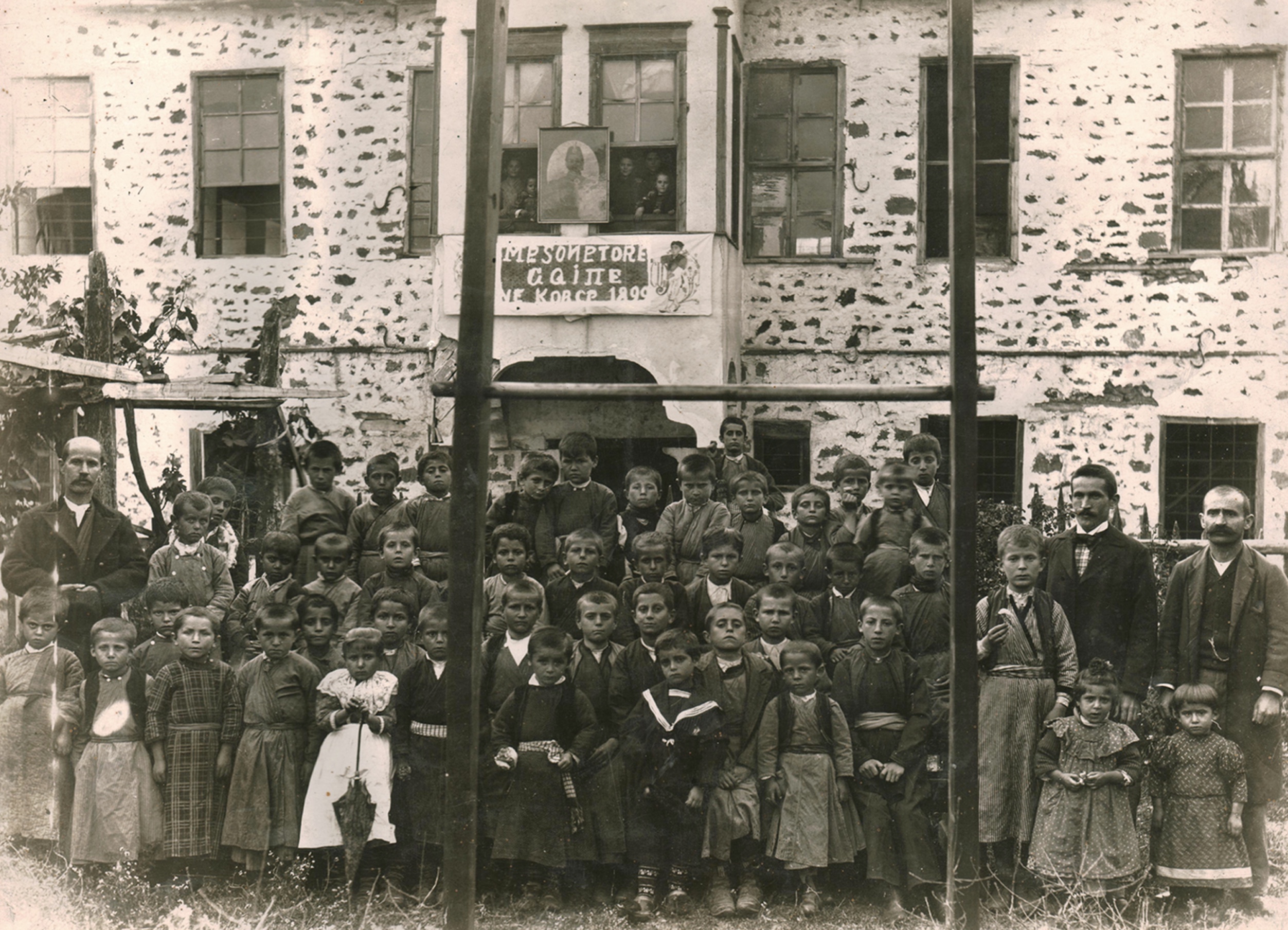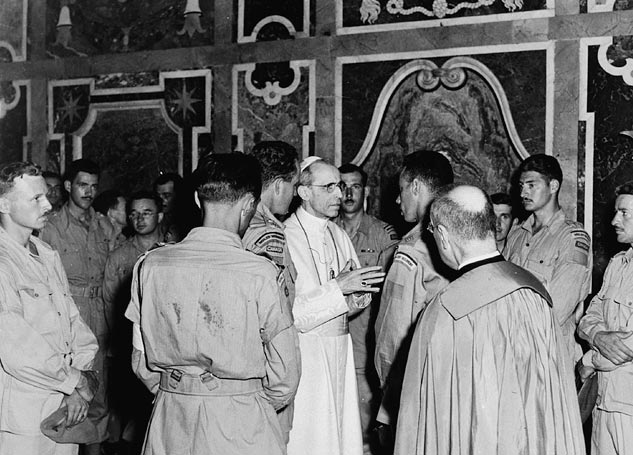|
Eastern Orthodoxy In Albania
Eastern Orthodoxy arrived in the areas of Illyrii proprie dicti or Principality of Arbanon during the period of Byzantine Empire. Those areas fell under the Ottoman Empire during the late medieval times and Eastern Orthodoxy underwent deep sociopolitical difficulties that lasted until the fall of the Ottoman Empire. Between 1913 and until the start of WWII under the newly recognized state of Albania, Eastern Orthodoxy saw a revival and in the 1937 the Autocephaly after a short Eastern Orthodoxy schism and contestation was recognized. Decades of persecution under the Communist state atheism, which started in 1967 and officially ended in December 1990, greatly weakened all religions and their practices especially Christians of Albania. The post-communist period and the lifting of legal and other government restrictions on religion allowed Orthodoxy to revive through institutions and enabled the development of new infrastructure, literature, educational facilities, international tra ... [...More Info...] [...Related Items...] OR: [Wikipedia] [Google] [Baidu] |
Eastern Orthodoxy
Eastern Orthodoxy, otherwise known as Eastern Orthodox Christianity or Byzantine Christianity, is one of the three main Branches of Christianity, branches of Chalcedonian Christianity, alongside Catholic Church, Catholicism and Protestantism. Like the Pentarchy of the first millennium, the mainstream (or "Canon law of the Eastern Orthodox Church, canonical") Eastern Orthodox Church is Organization of the Eastern Orthodox Church, organised into autocephalous churches independent from each other. In the 21st century, the Organization of the Eastern Orthodox Church#Autocephalous Eastern Orthodox churches, number of mainstream autocephalous churches is seventeen; there also exist Organization of the Eastern Orthodox Church#Unrecognised churches, autocephalous churches unrecognized by those mainstream ones. Autocephalous churches choose their own Primate (bishop), primate. Autocephalous churches can have Ecclesiastical jurisdiction, jurisdiction (authority) over other churches, som ... [...More Info...] [...Related Items...] OR: [Wikipedia] [Google] [Baidu] |
Roman Catholic
The Catholic Church (), also known as the Roman Catholic Church, is the largest Christian church, with 1.27 to 1.41 billion baptized Catholics worldwide as of 2025. It is among the world's oldest and largest international institutions and has played a prominent role in the history and development of Western civilization. O'Collins, p. v (preface). The church consists of 24 ''sui iuris'' (autonomous) churches, including the Latin Church and 23 Eastern Catholic Churches, which comprise almost 3,500 dioceses and eparchies around the world, each overseen by one or more bishops. The pope, who is the bishop of Rome, is the chief pastor of the church. The core beliefs of Catholicism are found in the Nicene Creed. The Catholic Church teaches that it is the one, holy, catholic and apostolic church founded by Jesus Christ in his Great Commission, that its bishops are the successors of Christ's apostles, and that the pope is the successor of Saint Peter, upo ... [...More Info...] [...Related Items...] OR: [Wikipedia] [Google] [Baidu] |
Përmet
Përmet () is a List of cities and towns in Albania, town and Municipalities of Albania, municipality in Gjirokastër County, southern Albania. The municipality of Përmet consists of the administrative units of Çarçovë, Frashër, Petran, Qendër Piskovë and Përmet. The total population is 7,980 as of 2023, in a total area of 602.47 km2. The population of the municipal unit at the 2023 census was 4,809. It is flanked by the Vjosë river, which runs along the Trebeshinë-Dhëmbel-Nemërçkë mountain chain, between Trebeshinë and Dhëmbel mountains, and through the Këlcyrë Gorge. Name The town itself is known in Albanian as ''Përmet''. The town is known in Italian as Permet, Aromanian language, Aromanian as , in Greek as ''Πρεμετή/Premeti'' and in Turkish as ''Permedi''. History 14th century In 14th century Përmet came under Ottoman Empire, Ottoman rule and became first a kaza of the sanjak of Gjirokastër and later of the Sanjak of Ioannina.History o ... [...More Info...] [...Related Items...] OR: [Wikipedia] [Google] [Baidu] |
Këlcyrë
Këlcyrë ( sq-definite, Këlcyra) is a town and a municipality in southern Albania, located on the bank of the river Vjosë. It was formed at the 2015 local government reform by the merger of the former municipalities Ballaban, Dishnicë, Këlcyrë and Sukë, that became municipal units. The seat of the municipality is the town Këlcyrë. The total population is 6,113 (2011 census), in a total area of 304.86 km2. The population of the former municipality at the 2011 census was 2,651. The Vjosë forms a canyon near the town, known as the Këlcyrë Gorge. Municipality The municipal unit consists of the town Këlcyrë and the villages Fshat Këlcyrë, Sukë, Dishnicë, Mbrezhdan, Maleshovë, Limar, Toshkëz, Ballaban, Tolar, Çorrogunjë, Leskaj and Kala. The village of Maleshovë traditionally consists of three neighbourhoods, one Christian, one Muslim and one with families of both religions. "Thus Maleshovë, which belongs to a group centering on Permet, has three mahala ... [...More Info...] [...Related Items...] OR: [Wikipedia] [Google] [Baidu] |
Korçë
Korçë (; sq-definite, Korça) is the List of cities and towns in Albania, eighth most populous city of Albania and the seat of Korçë County and Korçë Municipality. The total population of the city is 51,152 and 75,994 of Korçë municipality (2011 census), in a total area of . It stands on a plateau some Above mean sea level, above sea level, surrounded by the Morava Mountains. The area of the Old Bazaar of Korçë, Old Bazaar, including Mirahori Mosque, Korçë, Mirahori Mosque, is considered as the urban core of the city. Founded by the local Ottoman Empire, Ottoman Albanians, Albanian nobleman Iljaz Bej Mirahori, Ilias Bey Mirahori, the urban area of Korçë dates back to the late 15th century and the beginning of the 16th century, however its actual physiognomy was realized in the 19th century, during a period that corresponds with the rapid growth and development of the city. The Old Bazaar has played a dominant role in Albania's market history. Korçë is the larges ... [...More Info...] [...Related Items...] OR: [Wikipedia] [Google] [Baidu] |
Vlorë
Vlorë ( ; ; sq-definite, Vlora) is the List of cities and towns in Albania, third most populous city of Albania and seat of Vlorë County and Vlorë Municipality. Located in southwestern Albania, Vlorë sprawls on the Bay of Vlorë and is surrounded by the foothills of the Ceraunian Mountains along the Albanian Adriatic Sea Coast, Albanian Adriatic and Albanian Ionian Sea Coast, Ionian Sea Coasts. It experiences a Mediterranean climate, which is affected by the Ceraunian Mountains and the proximity to the Mediterranean Sea. The coastal area of Vlorë was one of the Illyrians, Illyrian sites that had experienced pre-urban activity beginning from the 11th–10th centuries BC. The area was Greek colonisation, colonized by Ancient Greece, Ancient Greeks. A large fortified port-town that was inhabited from the 6th century BC to the 2nd century AD is placed, now partially submerged, in Triport, Vlorë, Triport, northwest of present-day Vlorë. Substantial port activity in this site o ... [...More Info...] [...Related Items...] OR: [Wikipedia] [Google] [Baidu] |
Delvinë
Delvinë ( or , ) is a town and a municipality in Vlorë County, southern Albania, northeast of Sarandë. It was formed in the 2015 local government reform by the merger of the former municipalities Delvinë and Vergo, which became municipal units. The seat of the municipality is the town Delvinë. The population of the municipal unit Delvinë at the 2023 census was 4,952 and of the municipality was 6,166. The town is built on a mountain slope. It has a mosque, a Catholic church, a Protestant church, and an Orthodox church. Nearby are the remainders of a mediaeval castle. To the southwest of the city is the site of ancient Phoenice, which was declared an Archaeological Park in 2005. The town's population consists of a majority of Albanians and a substantial Greek minority. Other communities include Balkan Egyptians and until WWII, Jews. There is little local employment apart from that provided by the state, and Delvinë benefits little from the tourist boom in Sarandë. Ety ... [...More Info...] [...Related Items...] OR: [Wikipedia] [Google] [Baidu] |
Kaninë
Kaninë is a settlement in the Vlorë County, southwestern Albania. At the 2015 local government reform it became part of the municipality Vlorë. It is home to the Kaninë Castle. Name According to one theory, a fort which Procopius identifies as ''Kionin'' in Epirus Vetus may be a reference to Kanina. The other view holds that the name of the fortified settlement of Kanina was attested for the first time at the beginning of the 11th century AD in Byzantine Greek as (in plural form). Bardhyl Demiraj argues that the toponym is significant for the history of the Albanian language since ''Kanina'' represents a toponym that shows no sign of the dialect phenomenon of rhotacism, which is explained by him with the fact that the settlement was recorded with the name ''Kanina'' in a period during which rhotacism in Albanian was no longer active for some time. On the other hand, the name of nearby ''Vlorë'', attested earlier, was subject to the Albanian rhotacism. History The settleme ... [...More Info...] [...Related Items...] OR: [Wikipedia] [Google] [Baidu] |
Gjirokastër
Gjirokastër (, sq-definite, Gjirokastra) is a List of cities and towns in Albania, city in Southern Albania, southern Albania and the seat of Gjirokastër County and Gjirokastër Municipality. It is located in a valley between the Gjerë mountains and the Drino, at 300 metres above sea level. Its old town is a UNESCO World Heritage Site. The city is overlooked by Gjirokastër Fortress, where the Gjirokastër National Folk Festival is held every five years. It is the birthplace of former Albanians, Albanian Communism, communist leader Enver Hoxha, and author Ismail Kadare. The city appears in the historical record dating back in 1336 by its medieval Greek name, , as part of the Byzantine Empire. It first developed in the hill where the Gjirokastër Fortress is located. In this period, Gjirokastër was contested between the Despotate of Epirus and the Albanian clan of Zenevisi family, Zenebishi under John Zenevisi, Gjon Zenebishi who made it his capital in 1417. It was taken by ... [...More Info...] [...Related Items...] OR: [Wikipedia] [Google] [Baidu] |
Ecumenical Patriarchate Of Constantinople
The Ecumenical Patriarchate of Constantinople (, ; ; , "Roman Orthodox Patriarchate, Ecumenical Patriarchate of Istanbul") is one of the fifteen to seventeen autocephalous churches that together compose the Eastern Orthodox Church. It is headed by the Ecumenical Patriarch of Constantinople. Because of its historical location as the capital of the former Eastern Roman Empire and its role as the mother church of most modern Eastern Orthodox churches, Constantinople holds a special place of honor within Eastern Orthodox Christianity and serves as the seat for the Ecumenical Patriarch, who enjoys the status of '' primus inter pares'' (first among equals) among the world's Eastern Orthodox prelates and is regarded as the representative and spiritual leader of Eastern Orthodox Christians. Phanar (Turkish: '' Fener''), the name of the neighbourhood where ecumenical patriarch resides, is often used as a metaphor or shorthand for the Ecumenical Patriarchate of Constantinople. The E ... [...More Info...] [...Related Items...] OR: [Wikipedia] [Google] [Baidu] |
Archbishopric Of Ohrid
The Archbishopric of Ohrid, also known as the Bulgarian Archbishopric of Ohrid *T. Kamusella in The Politics of Language and Nationalism in Modern Central Europe, Springer, 2008, p. 276 *Aisling Lyon, Decentralisation and the Management of Ethnic Conflict: Lessons from the Republic of Macedonia, Routledge, 2015, p. 24 *R. Fraser, M. Hammond ed. Books Without Borders, Volume 1: The Cross-National Dimension in Print Culture, Springer, 2008, p. 41 *H. Cox, D. Hupchick, The Palgrave Concise Historical Atlas of Eastern Europe, Springer, 2016p. 67 *J. Rgen Nielsen, Jørgen S. Nielsen ed. Religion, Ethnicity and Contested Nationhood in the Former Ottoman Space, Brill, 2011,p. 234 *John Phillips, Macedonia: Warlords and Rebels in the Balkans, I.B.Tauris, 2004, p. 19 *Frederick F. Anscombe, State, Faith, and Nation in Ottoman and Post-Ottoman Lands, Cambridge University Press, 2014,p. 151 *D. Hupchick, The Balkans: From Constantinople to Communism, Springer, 2002, p. 67 *Chris Kostov, Cont ... [...More Info...] [...Related Items...] OR: [Wikipedia] [Google] [Baidu] |
Roman Catholics
The Catholic Church (), also known as the Roman Catholic Church, is the largest Christian church, with 1.27 to 1.41 billion baptized Catholics worldwide as of 2025. It is among the world's oldest and largest international institutions and has played a prominent role in the history and development of Western civilization. O'Collins, p. v (preface). The church consists of 24 ''sui iuris'' (autonomous) churches, including the Latin Church and 23 Eastern Catholic Churches, which comprise almost 3,500 dioceses and eparchies around the world, each overseen by one or more bishops. The pope, who is the bishop of Rome, is the chief pastor of the church. The core beliefs of Catholicism are found in the Nicene Creed. The Catholic Church teaches that it is the one, holy, catholic and apostolic church founded by Jesus Christ in his Great Commission, that its bishops are the successors of Christ's apostles, and that the pope is the successor of Saint Peter, upon whom ... [...More Info...] [...Related Items...] OR: [Wikipedia] [Google] [Baidu] |







